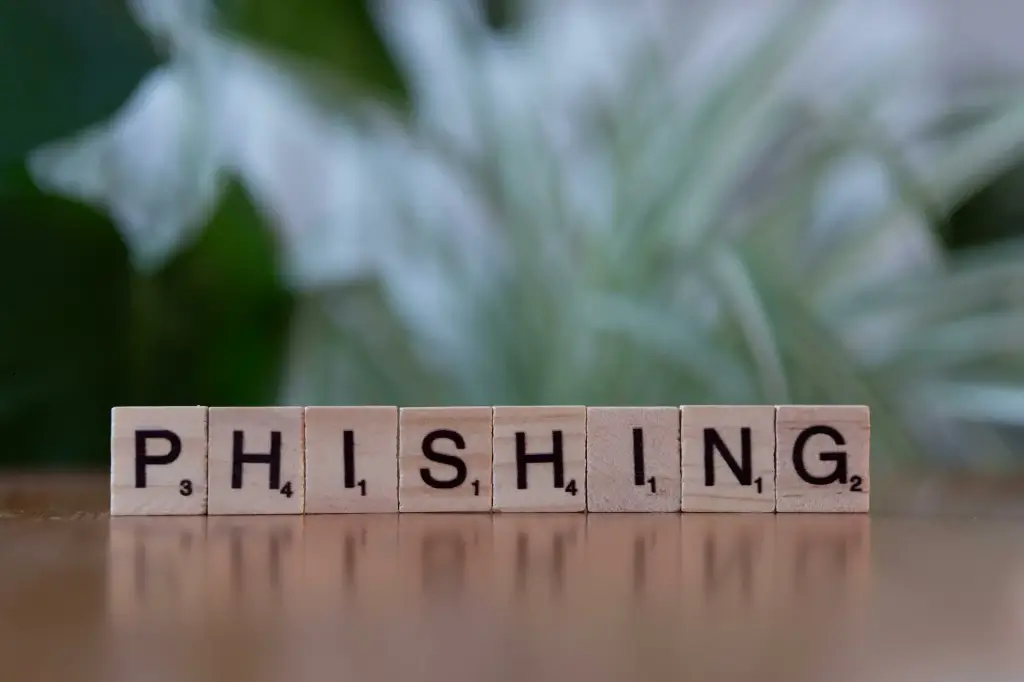Introduction Spam emails and relentless marketing subscriptions plague inboxes worldwide, leading to clutter, security risks, and wasted time. From suspicious links peddling counterfeit products to endless newsletters you never wanted, the volume of unwanted messages can feel overwhelming. Fortunately, by adopting a solid set of habits, tools, and security tactics, you can drastically reduce the spam flood and maintain a cleaner, safer inbox.

This comprehensive guide explores practical strategies—ranging from advanced filtering and unsubscribe best practices to safe email usage and next-level security solutions. Whether you’re a home user fending off marketing blasts or a small business protecting employees from constant spam infiltration, these techniques will help you keep your email communications streamlined and free of junk.
- Understand How Spammers Get Your Address 1.1 Website Registrations Many websites prompt you for an email address to access content, sign up for newsletters, or receive promotions. Unscrupulous sites may share or sell your data to third parties, fueling a spam surge.
1.2 Data Breaches When major organizations suffer cyberattacks, user databases can leak. Cybercriminals harvest email addresses and add them to massive spam lists.
1.3 Scraping and Harvesting Bots Spammers deploy bots scanning forums, social media profiles, or online directories for exposed email addresses. These bots compile addresses into large distribution lists.
1.4 Unsecured Mailing Lists Some mailing lists or companies inadvertently leave user data accessible or fail to secure their servers, leading to unauthorized data mining by hackers.
Keyword Tip: Emphasize “cyber liability insurance” and “identity theft protection” when discussing the broader security environment.
- Use Disposable or Secondary Emails 2.1 Disposable Email Services Tools like 10MinuteMail, TempMail, or GuerrillaMail let you generate a short-lived address for quick sign-ups. Once you close the session, the address expires, and spammers have nowhere to send more messages.
2.2 Secondary “Promo” Inbox Instead of giving your primary address to every site or e-commerce platform, create a separate “promotions” inbox on a free email service. This approach neatly segregates marketing or suspicious mail from your personal or work inbox.
2.3 Managed Security Services for Email Aliases For advanced solutions, providers like AnonAddy or SimpleLogin offer domain-based alias creation. You can spin up unique addresses for each sign-up, then disable them if spam appears. Large corporations rely on enterprise collaboration software with integrated email alias systems for better manageability.
- Leverage Modern Spam Filters 3.1 Built-In Provider Filters Gmail, Outlook, Yahoo, and other mainstream services incorporate sophisticated spam detection algorithms that quarantine suspicious messages automatically. Train these filters by marking unwanted messages as spam.
3.2 Custom Rules and Filters If your provider allows custom rules, define keywords or addresses that route unwanted mails to folders or trash. For instance, filter out repeated spam from certain domains or repeated subjects like “Win a Free iPhone.”
3.3 AI-Based Email Security Many cloud-based email security solutions rely on machine learning to spot new spam patterns. Products like Proofpoint, Mimecast, or Microsoft Defender for Office 365 examine attachments, domain reputations, and message structures. For personal usage, free browser extensions or robust antivirus suites might incorporate similar scanning to reduce your spam burden.
- Avoid Publishing Your Email Publicly 4.1 Social Media Precautions Never post your primary address directly on social media profiles or public posts. If you must share it, format it in a human-readable but bot-resistant style (e.g., “username [at] example dot com”).
4.2 Contact Forms Instead of Addresses If you run a website, use a contact form rather than listing your email in plain text. This approach thwarts email-scraping bots.
4.3 Domain WHOIS Privacy If you own a personal domain, consider WHOIS privacy protection. Without it, your domain registration info (including email) can be scraped.
- Unsubscribe Wisely 5.1 Check Legitimate Unsubscribes Many newsletters include a legitimate “Unsubscribe” link at the bottom. If you know the sender is genuine, unsubscribing is effective.
5.2 Beware Phishing “Unsubscribe” Links Some spam messages lure you with a fake unsubscribe link that leads to malicious websites or reaffirms your address is active. If a message looks shady, mark it as spam rather than clicking any link.
5.3 Automated Unsubscribe Tools Browser plugins or email apps can parse newsletters and present an “Unsubscribe” option automatically. Services like Unroll.me or Clean Email group mailing list emails, letting you quickly remove yourself from many lists. However, read each service’s privacy terms, as some gather data from your inbox.
- Train Yourself to Spot Spam Patterns 6.1 Grammatical Errors or Odd Language Many mass spam operations outsource content creation with minimal proofreading, resulting in unnatural wording. The usage of random capitalization, emojis, or over-the-top punctuation also signals spam.
6.2 Emotional Manipulation or Urgency “Your account will be locked within 24 hours!” or “Congratulations, you’ve won a free vacation!” Attackers rely on immediate panic or excitement. Keep a level head and verify the claims.
6.3 Unrecognized Senders If the sender’s address or name doesn’t ring a bell, approach the email cautiously. Spammers sometimes pretend to be a friend, but the subject might be suspicious.
6.4 Email Marketing Automation Overuse Some legitimate companies go overboard on marketing blasts. If you notice a brand emailing you almost daily with promotions, unsubscribing or blocking them can keep your mailbox tidy.
- Keep Your System and Apps Updated 7.1 Patching Vulnerabilities Exploits that compromise email security or inject spam often target out-of-date operating systems or email clients. By letting Windows, macOS, iOS, or Android auto-update, you patch known flaws.
7.2 Antivirus and Firewalls A strong antivirus or endpoint detection solution can intercept trojans lurking in spam attachments. Firewalls help block suspicious outbound connections from potential malware on your device.
7.3 Email Client Upgrades Legacy email clients might lack modern spam filter support or encryption protocols. Upgrading to the latest version ensures you have stronger anti-spam measures.
- Deploy Advanced Security Tools 8.1 Zero-Knowledge Email Encryption Providers like ProtonMail or Tutanota automatically encrypt messages end-to-end. While this doesn’t block spam by itself, it ensures your real email usage remains private, deterring criminals who can’t read your messages.
8.2 Identity Theft Protection Services If your email is compromised in a data breach, identity theft protection can alert you quickly. Additionally, “cyber liability insurance” can mitigate costs if a massive spam infiltration leads to business disruption.
8.3 Managed Security Services For small businesses with limited IT staff, a managed security services provider can handle advanced spam filtering, quarantines, and ongoing monitoring. This approach ensures enterprise-grade email security without building it in-house.
- Utilize Aliases and Sub-Addresses 9.1 Dot or Plus Tricks (If Supported) Services like Gmail let you add “+anytext” before the “@gmail.com” to create custom addresses that route to your main inbox. For instance, “example+shopping@gmail.com.” Then you can see who shared your address if spam arises.
9.2 Delegated Aliases Some email services provide domain-based aliases. For instance, “info@yourdomain.com” or “newsletter@yourdomain.com,” letting you disable or rename them if spam creeps in.
9.3 Cloud-Based Email Security When scaling for large teams, a cloud-based solution can manage these aliases or sub-accounts automatically, ensuring your staff have specialized addresses for marketing vs. internal usage.
- Segmenting Work and Personal Communication 10.1 Dedicated Work Email If you’re receiving massive spam to your corporate address, verifying how it was published or used externally helps. Keep personal communications on a separate mailbox.
10.2 Multiple Personal Addresses A separate “junk” or “newsletter” email for sign-ups ensures that if it’s spammed out, you simply check it occasionally or let it fill up. Meanwhile, your personal address remains quiet.
10.3 Minimizing Data Exposure Using your personal address only for trusted contacts or official documents drastically cuts spam. The fewer times your address circulates in public, the lower your spam volume.
- Avoid Free Gift Scams and Surveys 11.1 Suspicious Contests Emails claiming you “won a free gift” or “earn a $500 gift card by completing this survey” often gather personal data or funnel you to spammy marketing lists.
11.2 Data Encryption Services for Submissions If you must share data with an uncertain site, encrypt the file or document. That way, if it’s purely about gleaning your contact info, your real data stays hidden.
11.3 Reading Fine Print Some “offers” bury disclaimers about sharing your email with “marketing partners.” The moment you proceed, expect a wave of spam.
- Manage Unwanted Subscriptions with Tools 12.1 Bulk Unsubscriber Platforms Services like Unroll.me, Cleanfox, or Leave Me Alone connect to your inbox, letting you see all newsletter senders in one place. With one click, you can remove yourself from multiple lists or compress them into a single daily digest.
12.2 Privacy Implications Check these aggregator tools’ privacy policies: some have been accused of scanning user emails for marketing intelligence. If you prefer not to share your data, rely on manual unsubscribing or email client rules.
12.3 Impact on Enterprise Collaboration Software Organizations using advanced suites like Google Workspace or Microsoft 365 might integrate automated unsubscribing features, letting employees manage newsletters efficiently and reduce spam.
- Regularly Audit Your Email Preferences 13.1 Review Subscriptions Each quarter or so, skim your mailbox for repeated marketing messages. Revoke or unsubscribe from those you no longer want.
13.2 Check Notification Settings If you sign up for many online platforms, you might have default notifications turned on for each comment, mention, or update. Tweak settings so only essential notifications arrive.
13.3 Use Cybersecurity Consulting If spam or malicious attempts become overwhelming, short-term “cybersecurity consulting” can help identify which addresses or lists have been compromised and recommend professional tools.
- Documenting Spam Sources 14.1 Track Which Sites Might Have Leaked Your Email If you used a unique sub-address for each site, noticing spam indicates that specific site or service leaked or sold your data.
14.2 Potential Legal Avenues Under certain data protection regulations (GDPR in Europe, for example), you can challenge companies that share your data without permission. This process can deter them from repeated privacy violations.
14.3 Recycle or Retire Addresses If the spam volume is too high, you may decide to fully retire a heavily spammed address and notify important contacts of your new one.
- The Future of Spam Prevention 15.1 AI-Driven Filters Machine learning is refining spam detection further, analyzing message context, attachments, and link behavior. These solutions will continue to reduce false positives and track new spam patterns.
15.2 Domain and Identity Verification Growing adoption of DMARC, DKIM, and SPF ensures that emails from your domain can be validated, lessening phishing attempts that leverage your brand.
15.3 Legislation and Enforcement Stricter anti-spam laws globally may hamper large-scale spam operators. However, criminals will shift tactics, so user vigilance remains key.
- Conclusion Avoiding spam emails and unwanted subscriptions is an achievable goal if you combine proactive strategies: segmented email usage, robust spam filtering, and mindful unsubscribing. Disposable addresses or separate “promo” inboxes ensure that promotional floods never taint your primary account. Meanwhile, understanding the mechanics of data leaks and phishing helps you better protect your real address from malicious lists. By staying informed, harnessing advanced filters or unsubscribe tools, and regularly auditing your subscriptions, you’ll keep spam at bay.
From secure “managed security services” that block suspicious links to advanced “cyber liability insurance” considerations, the era of ignoring spam is over. Your email is a valuable communication channel, and you must treat it with the same care as any critical digital asset. With these best practices, you’ll enjoy a cleaner inbox, fewer distractions, and reduced risk of hidden malware or identity theft. The effort pays off in daily convenience, sharper focus, and peace of mind.




